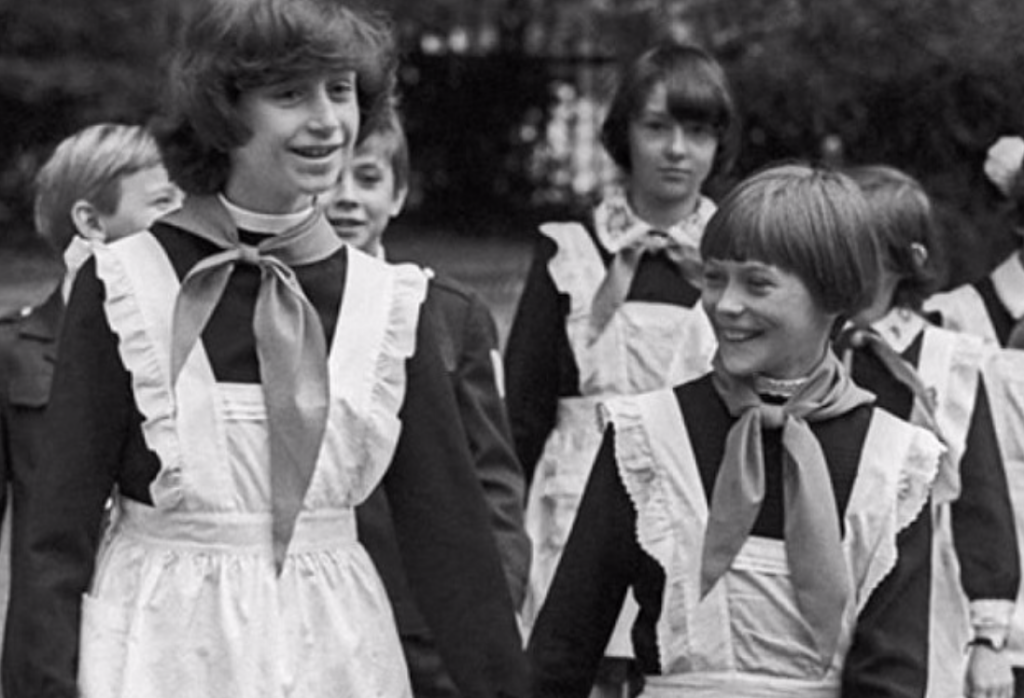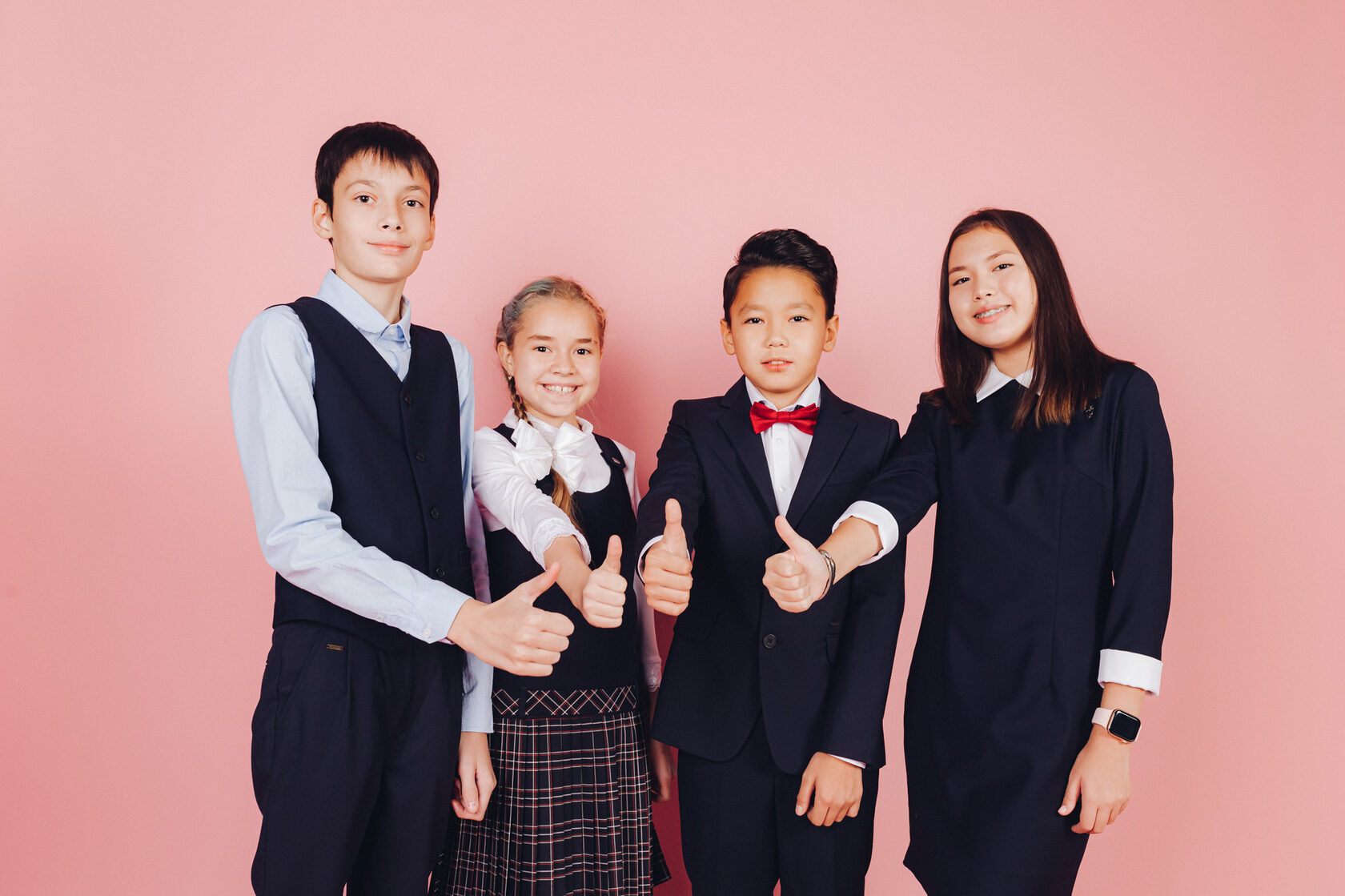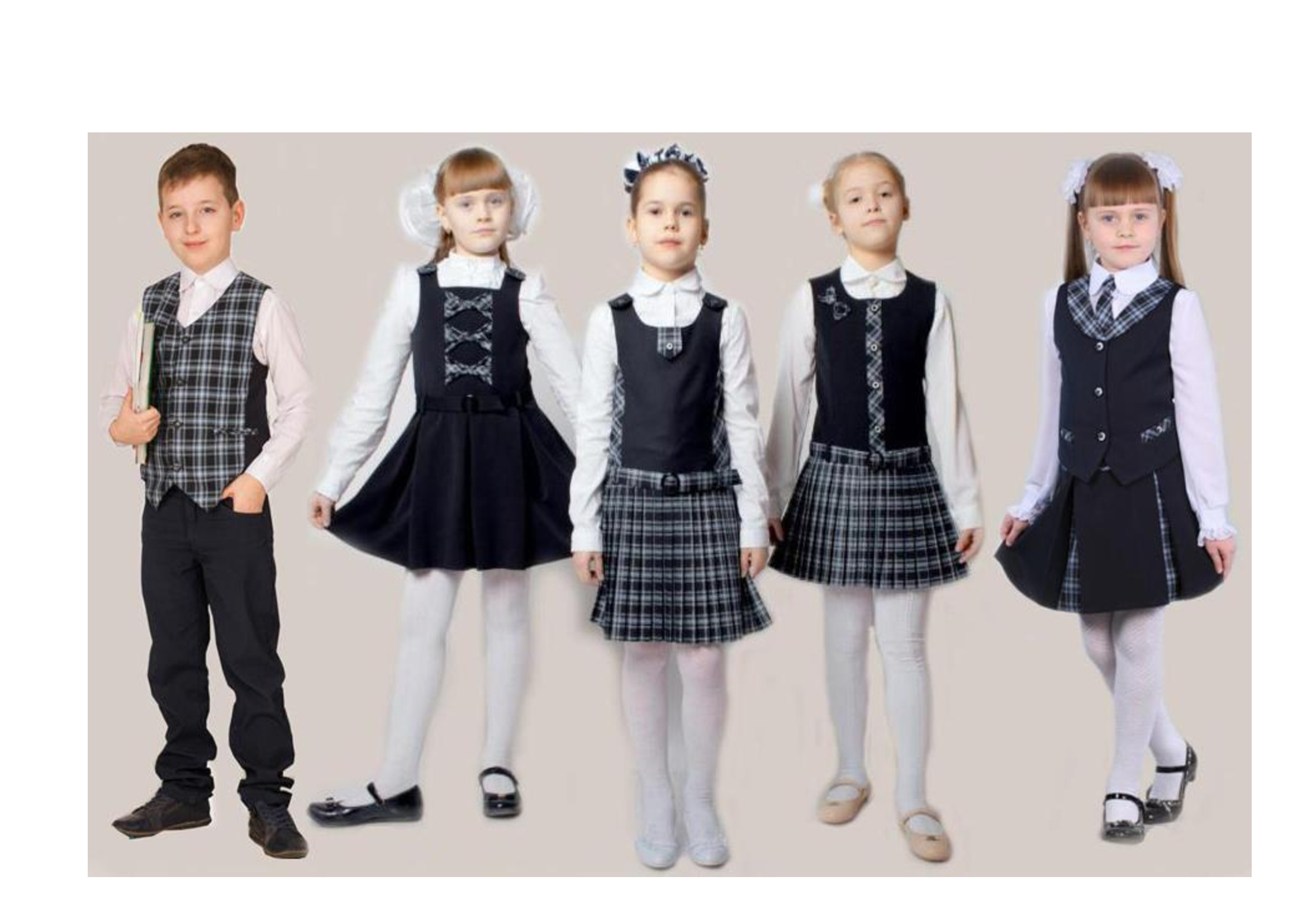If everyday fashion reflects the spirit of the times, then school uniforms reflect a nation’s approach to education.
Over the years, school uniforms have symbolized how the government sees its students — and the future of the country.
In the end, school uniforms are also part of our childhood. For many, they bring a wave of nostalgia. Though, of course, not everyone has always been a fan.
School Uniforms in the USSR
Soviet school uniforms remain a symbol of discipline, elegance, and neatness.
Boys wore classic trousers and jackets. Girls wore dresses with lace aprons. And, of course, there was the iconic red Pioneer scarf!

Students wore these uniforms with pride. They would pin on medals and Lenin badges, which all Pioneer members received.
But with the fall of the Soviet Union, the school uniform disappeared as well.
School Uniforms in the 1990s
The 1990s were a time of chaos and change across Russia. Rules were few and unclear — even for school dress codes.
From 1992 to around 2010, most schools had no formal uniforms. Children wore whatever they wanted to school.
Some schools were exceptions. For example, in certain gymnasiums in the early 2000s, uniforms were encouraged or required.
But for most schools, no uniform meant students’ economic differences were immediately visible. Unfortunately, this often led to bullying, as inequality was impossible to ignore.
Eventually, as the country stabilized, schools began bringing uniforms back.
School Uniforms in 2025
Today, most schools in Russia have reintroduced uniforms — but they are far from “uniform.”
Each school now decides what its dress code looks like. And within those guidelines, students are given many choices.
Boys can pick from different cuts of pants, jackets, or vests. Girls have even more options: skirts, trousers, dresses, blazers, and vests in a variety of styles.
While students wear a shared uniform, they still have freedom to choose outfits that reflect their personality — and that feel comfortable to wear.

Manufacturers now design school uniforms with fashion trends in mind, aiming to create styles kids actually enjoy wearing.
At the same time, the fabric, color scheme, and overall appearance remain consistent for all students.

There is still debate among parents: is a school uniform necessary in modern Russia? In countries like the U.S., most schools don’t require uniforms. Kids express themselves through their clothing freely. But cultural and educational values differ greatly between the U.S. and Russia. always has been.
Yes, uniforms create a certain level of conformity. But perhaps school should be a place of structure and focus — and uniforms help create that mindset.
And with so many modern choices, today’s students can still be themselves — even in a uniform.









